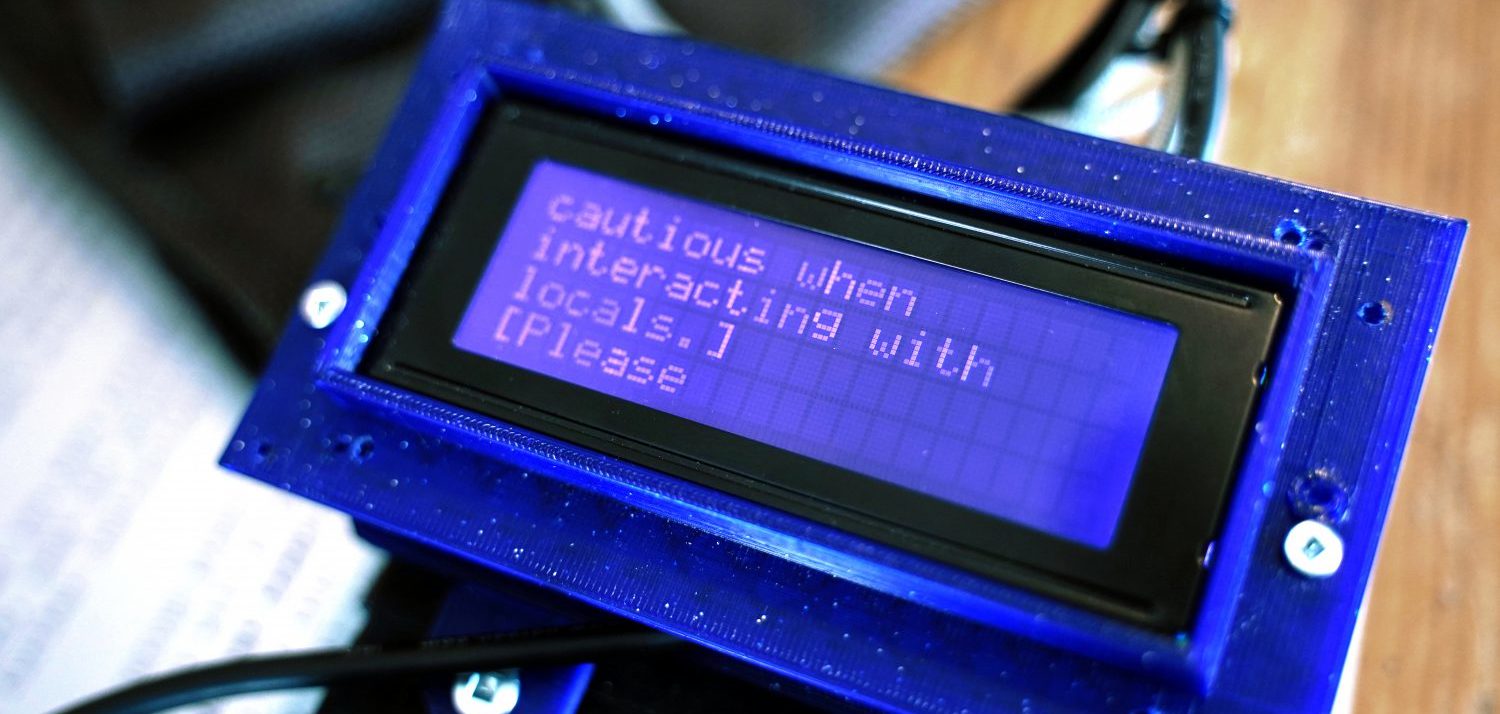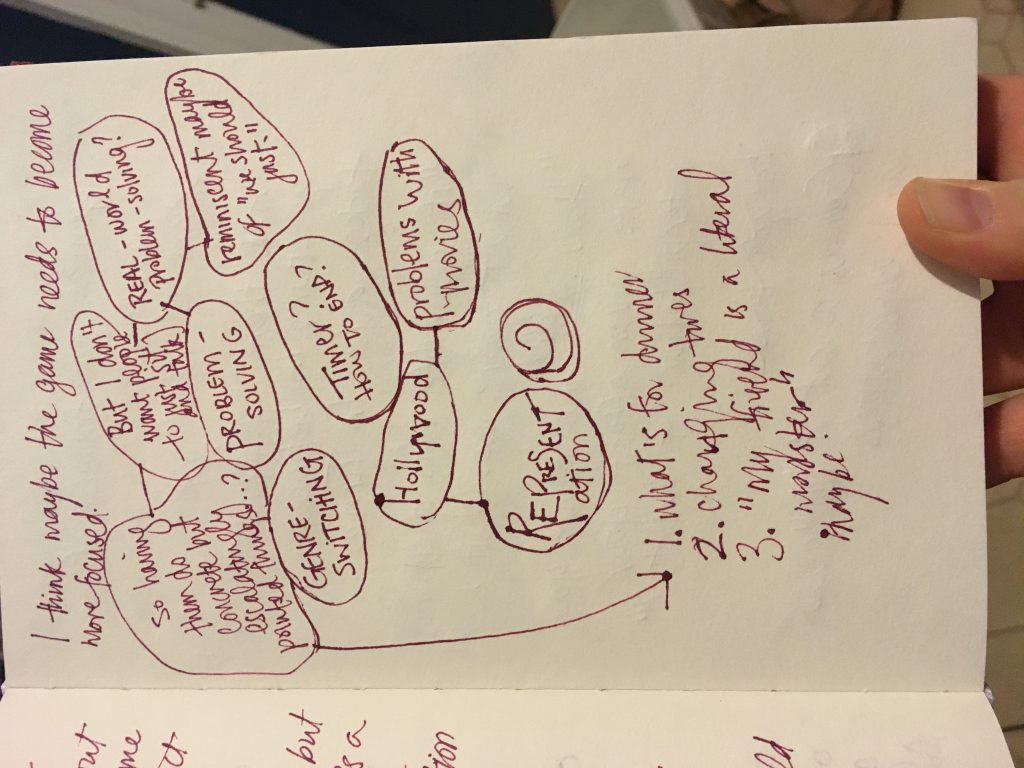Using Exercise 5.6 from Heewon Chang’s Autoethnography as Method (“List five artifacts, in order of importance, that represent your culture and briefly describe what each artifact represents. Select one and expound on the cultural meaning of this article in your life.”) as a prompt, I’m going to use these artefacts to talk about my history with artefacts of play and artefacts of design.
In trying to write these lists, I’m aware of the difficulty of the word “importance” — my play and design practices have existed for a long time now, and it’s difficult to know what to give weight to. On the one hand, I could list “firsts” — but are the first games I played actually any more important for being first? There’s also games that I played often or repeatedly, not necessarily because they were particularly good or important games to me, but because they were there. In some cases, I just “remember” certain artefacts vividly — is the fact that they are memorable important? At any rate, I’ve done my best to make these lists without worrying too much about whether I’ve got all the most important ones down, and with a multi-faceted understanding of what the term “important” might mean.
Here’s the first list, five artefacts of play. Writing about myself in great detail is less easy than I thought it would be!
ARTEFACTS OF PLAY, BOTH DIGITAL AND PHYSICAL
* My mother’s brown silk skirt: I used to borrow this skirt constantly to wear it as a cape, or to pretend to be a two-headed monster with a friend. Dress-up and imagination-based games were very important to me as a child. I loved to play pretend. Nowadays, I still enjoy making costumes and cosplaying, and making objects, and I play tabletop RPGs all the time.
* My brother’s PlayStation 2: Many of the early gaming experiences that I remember were with the SNES and then the original PlayStation. I remember having a very limited set of games, which meant that I had to replay or watch my brother replay the same games over and over again. When our household finally got a PlayStation 2, I also got my own memory card, which was important because it was mine to save what I wanted on it. I remember the saved game icons, like the badges that I had earned as a Scout, lined up in rows. What’s important about the PlayStation 2 is that when we finally got one, I was old enough to buy games for myself, if I saved up enough money. The first game I remember buying for myself was Final Fantasy VII, years after it came out. Things are a little fuzzy — it’s hard to remember what I played first. I remember playing the Monster Rancher series, where game discs and others were special artefacts that could gain me unusual fantastic creatures…or often just boring old “Mochi”, the game’s mascot, designed to look like a Japanese treat that I didn’t try until I was an adult.
Even later, I often replayed the same games again and again because I couldn’t afford new ones. One of the games I remember renting most often was Wild Arms, a JRPG with puzzle elements where different characters had different special abilities that could solve puzzles in the dungeons. It was a compelling little game, but the copies that I had access to — one borrowed from a friend of my brother’s, and one rented from Game Zone, my rental spot of choice, always froze at the same point in the game when I played it on our PlayStation. The PlayStation 2 was better able to handle any scratches or flaws on discs, and so I was able to play past that point in the game on the rented disc. I remember longing to own a copy, and finally got one as a gift a few years ago.
I spent a lot of time on that PlayStation 2.
* JRPGs: My games of choice as a child were JRPGs. I especially played the Final Fantasy series, because they had a good reputation and I had limited disposable income, which made it harder to take chances on games. Lately, I have been replaying certain “classic” games that I own copies of with my spouse, including Final Fantasy X, Chrono Trigger, and Chrono Cross. Small moments in the play call to mind my childhood and my earlier formative game-playing experiences. I remember that I played Chrono Cross before I ever played Chrono Trigger, meaning that some references in the game to the other series were totally lost on me the first time around. I remember that one of my best friends’ brothers introduced me to Chrono Trigger, saying how he could choose to do the final boss battle right now, at any time, but that he would get his butt kicked if he did. At the time, I was intrigued, but had no idea who Lavos was.
* A Football: My dad was part of an amateur touch-football league for something like fifteen years. When I was about five years old, my brother started to play football with a local tackle football league. Every game, I would ask the coaches if I could play, and they would tell me “come back when you’re seven.” So I did, and from the ages of seven to twelve, I played in a boys’ tackle football league. I played snapper, offensive line, defensive line, defensive back, tight end, and specialty teams. At that age, I had hit a growth spurt before the other kids on my team, and I was pretty strong and coordinated. I learned a lot from this experience, about what it meant to be a “girl” in a patriarchy, about cooperation and being a part of a team, and about persistance. I also learned that I loved to tackle things and play in the mud. Rainy practices were the best practices. In addition to our taste in books and games, football is something that I share with my brother and father.
* My First Set of Dice: I started playing Dungeons & Dragons 3.5 Edition when I was seventeen years old, and I still have the first set of dice that I bought. They are simple, black and white dice. When my spouse tried to test their balance using the old heavily-salted water technique, they wouldn’t float. Over the years, I’ve garnered a reputation for being unnaturally lucky with dice — and not just these ones. I don’t roll a twenty every time, but my character stats, now always rolled under close observation, are always a bit better than normal, and I have been known to come through dramatically in a pinch when playing Battlestar Galactica and piloting. For the past few years, I have played a tabletop roleplaying game once a week (barring any unforeseen scheduling issues) with the same group of people. I’ve played multiple campaigns of Dungeons & Dragons, Pathfinder, Call of Cthulhu, Hunter: The Vigil, Ogg, Chaosium, Fate SRD, Fate Accelerated, Honey Heist, Fiasco!, Microscope, Kingdom, The Quiet Year, and many a random one-shot. Even when I’m at my most busy and can’t seem to make any time for leisure, I am usually still attending my weekly game night. So, tabletop games, and my dice, are constant companions of play for me.

